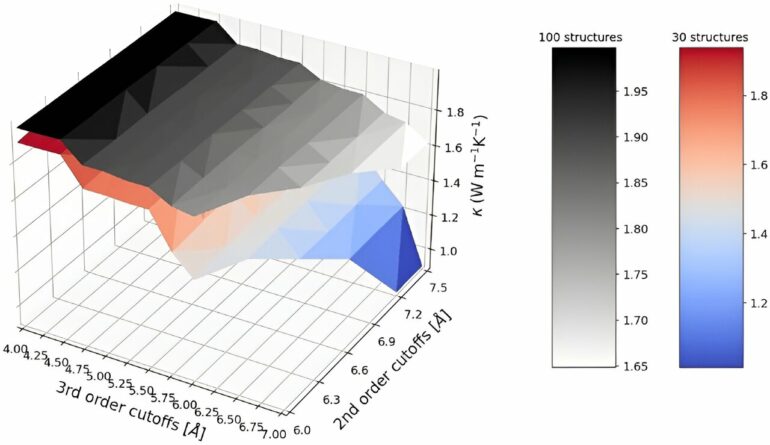About 70% of the energy we use in everyday life is wasted in the form of heat, produced by engines, factories, and electrical devices. However, researchers from EPFL’s School of Engineering have made a significant theoretical step forward that could boost sustainable energy generation.
Computational work from the laboratory of Theory and Simulation of Materials (THEOS) has unraveled the fundamental theories behind one of the major technologies used to enhance the efficiency of thermoelectric conversion, paving the way for better material selection and faster, more cost-effective discovery processes. This breakthrough, published in the journal Physical Review Research, has the potential to contribute to a greener economy and a more sustainable future.
Thermoelectric devices are a hot topic as they offer the promising potential to convert waste heat into sustainable electricity. When there is a temperature difference across a thermoelectric material, where one side is hotter than the other, it causes a flow of charges within the material, generating an electrical current that can be converted back into electrical energy. This technology is increasingly looked towards for enhancing the sustainability of various energy-intensive industries, from transportation to power plants and manufacturing.
However, maximizing the efficiency of thermoelectric conversion has proven challenging due to the lack of underlying theories of heat conduction in materials with poor thermal conductivity. For a material to be useful in a thermoelectric device, it needs to have a low heat transfer, or thermal conductivity, and a high electrical conductivity. The greater the difference between the two, the better suited the material. Some materials are known to be good candidates, but material scientists must rely on expensive testing as the underlying physical principles remain elusive.
This is where computational physics comes in, employing advanced simulations and modeling techniques on powerful super computers to unravel the fundamental physical principles governing thermoelectric materials’ behavior and heat conduction.
“Unlocking the theoretical secrets of thermoelectric materials brings us one step closer to a greener, more sustainable future,” says Enrico Di Lucente, researcher at THEOS, in collaboration with Michele Simoncelli, now at Cambridge University, and Professor Nicola Marzari, head of THEOS and director of the NCCR MARVEL.
To unravel the mystery, the EPFL team research focused on a class of crystals known as skutterudites, which have a unique cage-like atomic structure and are known to be promising materials for thermoelectric conversion. They increase their thermoelectric efficiency when supplementary atoms, referred to as “rattlers,” are added into their atomic cages.
With the new model developed at EPFL, the researchers observed the expected significant reduction in heat transfer and predicted the phenomenon with extreme precision without the need for any empirical data.
The major scientific advance comes from how the computational model also sheds light onto an unexpected quantic mechanism at play.
“We found, for the first time, that these rattler atoms cause a transition in how heat is conducted within the crystals, switching from particle-like conduction to wave-like tunneling,” says Di Lucente. The new computational model opens the door to designing novel materials with ultralow thermal conductivity without the need for costly empirical trials, bringing us an important step closer to creating a more energy efficient economy.
More information:
Enrico Di Lucente et al, Crossover from Boltzmann to Wigner thermal transport in thermoelectric skutterudites, Physical Review Research (2023). DOI: 10.1103/PhysRevResearch.5.033125
Provided by
Ecole Polytechnique Federale de Lausanne
Citation:
Computation model paves the way for more efficient energy systems (2023, August 24)



